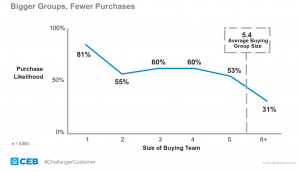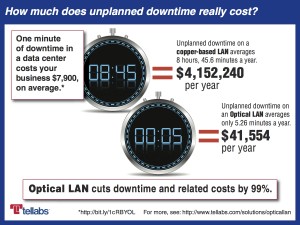
Top 100 Content Marketing Question: How can we create content that effectively works across various audiences?

How to create content that effectively works across various audiences?
“What we need is a machine that will let us see the other guy’s point of view.”
That answer comes from sci-fi author Arthur C. Clarke.
Because there’s no artificial intelligence empathy machine yet, marketers take 3 approaches to ensure that the they create content that effectively works across various audiences.
1. Know your buyers
Too often marketers and executives assume they know who the buyers are and how they behave. The problem is, they can’t see what’s happening when buyers are offstage, out of sight.

Buyer persona research yields the insights you need to create content that effectively works across various audiences. Such research reveals:
- What sparked the purchase
- What information buyers needed
- Which obstacles they encountered
- How they overcame these obstacles
- Exactly how they reached a final purchase decision.
For example, one client believed that it needed marketing to address 5 separate buying decision-makers – plant managers, specifying engineers, mechanical contractors, distributors and OEM customers.
But buyer persona research revealed that only 2 of the 5 played any key role in making purchasing decisions. The others only rubber-stamp the decisions or follow orders.
With that insight, instead of splitting the marketing budget 5 ways, the client focused all the money on the 2 buyers who mattered most.
What’s more, buyer persona research revealed the ground truths about the buyers, their motivations and behaviors.
The specifying engineer – let’s call him Ed:
- Is driven by fear of failure, since a wrong decision could cause an injury or death
- Needs continuing education credits, so can be reached via workshops
- Only trusts certain textbooks, websites and people who have never failed him
- Couldn’t care less about the price, as long as the product meets his exact need.

The industrial distributor – let’s call him Dan:
- Is transaction-oriented
- Is driven by speed of product availability and responsiveness to requests
- Uses email to sell, so he wants easy-to-use websites, PDFs and links
- Couldn’t care less about the brand.

The key insight from buyer persona research: Ed and Dan drive every moving part of the buying decision.
Even though the purchasing department appears to have influence when it buys from Dan, purchasing simply follows Ed’s orders. You can only get that kind of insight from buyer persona research.
A parallel approach is to discover your customers’ top 100 questions. You can gather buyer questions through:
- In-person interviews at events, meetings or phone calls
- Online discovery on Google, YouTube, Facebook, Quora, and BuzzSumo’s question analyzer
- Customer chat, customer service and customer emails.
Here’s more on how to gather, tag and analyze buyers’ questions. Once you have a text analysis, you’ll know:
- What are buyers’ most important questions?
- How buyer questions vary at each step in the buyers’ journey?
- Where are the pitfalls that block buyers’ progress?
Knowing buyer behaviors and questions gives you tremendous insight and the confidence to create content that effectively works across various audiences.
2. Use your content analytics

Once a month, review the performance of all your content – on your website, in PR, at events, email – everything you can measure.
Which content is most compelling to your existing users? Which topics, headlines, media and formats do they use the most?
Detect the patterns that lie within your successful content assets. Experiment with the winners. Run A/B tests that can make your content even more successful.
When you know which content buyers value the most, where they spend the longest time on a page, and where they are likeliest to convert, you’ve achieved what Andy Crestodina calls “data-driven empathy.”
You can begin to see the world through buyers’ eyes by knowing their behaviors as they engage with your content.
3. Serve the relevant slice of your message to each buyer
A common mistake that marketers make is to serve up their content by category. Many websites offer links like these:
- Videos
- Infographics
- Blogs
- Articles
- News.
Clearly, that’s the way marketers think about content. Unfortunately, it’s not how buyers think about content.

Instead, buyers are looking for answers to their questions, information that’s relevant to their needs, and social proof that the information source can be trusted.
Business-to-business marketers often need to sell to a buying team, especially on carefully considered purchases with large price tags. It’s typical for the team to include a technical buyer from the department that will use the product, an economic buyer from purchasing, product users and others.

Here’s the bad news: with the typical-sized buying committee, 5.4 people, chances are that they will stick with the status quo more than half of the time. In other words, your real enemy isn’t the competition – it’s the inertia that makes people stick with the status quo.
People avoid facing the pain of change. It’s hard to get people to move beyond the status quo, when they have the illusion that the status quo is “free.”
To get buyers to consider your product, you may have to sell the problem first and the solution later on. Sell the problem by demonstrating the apparent and hidden costs of sticking with the status quo, as this infographic does:

Here’s the catch – each member of a buying committee is trying to solve a different problem:
- The technical buyer wants the best technology and one that plays well with the technologies they already use.
- The economic buyer wants the lowest cost – either the lowest initial cost or the lowest lifecycle cost.
- The user wants reliability, ease of transition, and the shortest possible learning curve.
- The green buyer wants a smaller carbon footprint, less energy use, and less environmental impact.
No wonder buying committees usually stick with the status quo.
As a marketer, you need a message that’s relevant to each buying decision-maker, while keeping your overall message absolutely consistent.
You can achieve that by creating a set of Message Maps that are color-coded to each buyer’s needs. For example, at Tellabs we created one consistent Message Map, then color-coded it as follows.
This Message Map addresses technical buyers’ needs:

This Message Map addresses economic buyers’ needs:

This Message Map addresses the green buyers’ needs:

Note that the black-and-white parts of the message are absolutely consistent. Since each version of the Message Map is color-coded, only the relevant parts of the message go to each buying committee member.
If a buyer says, “So what? Who cares?”, then you’ve just said something they consider irrelevant. Learn from that experience.
There’s no point in delivering a message that a buyer doesn’t care about.
To create content that effectively works across various audiences:
- Get to know your buyers through buyer persona research, analyzing buyer questions, or both.
- Use content analytics to learn from buyers who use your content.
- Create color-coded Message Maps to ensure that you only deliver the relevant parts of the message to each member of the buying committee.
Together, these practices will enable you to consistently create content that effectively works across various audiences.
Here are more answers to marketers’ Top 100 Questions on content marketing.
Related Posts
Top 100 Content Marketing Question: How do we target content marketing effectively?
“How to effectively target using content marketing?” Target content marketing effectively by identifying the right audience of buyers – the tribe that craves your...
Discover Your Content Marketing Sweet Spot
Ready? Aim! Reach people with the right content marketing. Start with the right message. A review of B2B websites shows that marketers are really...
5 Ideas to Write Better Marketing Content – Infographic
Content Jam 2017 brought together hundreds of marketers and thought leaders last week in Chicago. Among the ideas that bubbled to the surface were...
Don’t Insult Your Audience: 13 Messaging Mistakes to Avoid
The presidential campaign has brought forth a bumper crop of jumbled, incoherent messages. As marketers work on their companies’ stories, we can learn a lot from...





